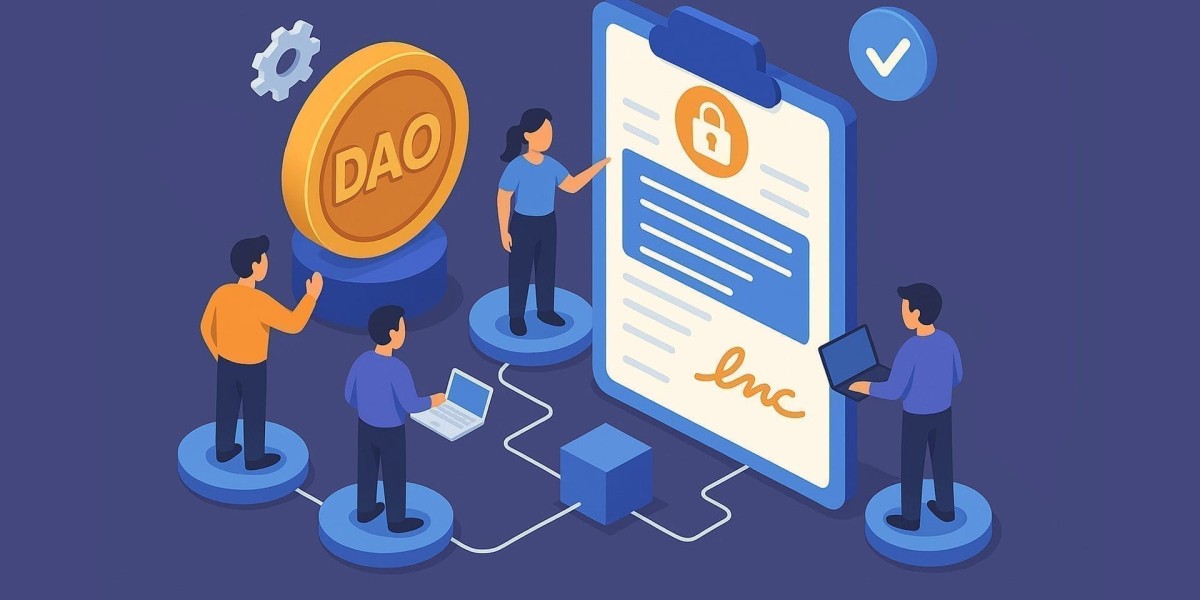In the fast-changing world of digital assets, one concept is quietly reshaping how people invest and how businesses raise capital — the security token. While cryptocurrencies and utility tokens have dominated discussions for years, the rise of security tokens represents a powerful blend of regulated finance and blockchain technology. Unlike many earlier crypto projects driven by speculation, this development is grounded in compliance, transparency, and tangible ownership. It’s not just another blockchain trend — it’s a structural change in how financial instruments are issued and traded.
Understanding What a Security Token Really Is
A security token is a digital representation of a traditional financial asset such as equity, debt, or real estate ownership, issued and managed on a blockchain. What makes it unique is its compliance with existing securities laws. In simple terms, it’s a share, bond, or asset wrapped in blockchain technology. The token provides proof of ownership and can even automate processes such as dividends, voting rights, and profit sharing through programmable smart contracts.
Unlike utility tokens, which grant access to a product or service within a blockchain ecosystem, security tokens are tied directly to investment value and ownership rights. They fall under the same regulatory standards that apply to shares, bonds, and other securities — a critical distinction that ensures legal protection and market legitimacy.
This means that when investors buy a security token, they aren’t speculating on abstract digital value; they’re purchasing a stake in something real. And because the blockchain records ownership and transfers immutably, transactions can occur with far greater speed and lower cost compared to traditional systems.
Why Security Tokens Are Emerging Now
The timing of security tokens’ growth isn’t random. It’s a direct response to the challenges that traditional finance and early cryptocurrency markets faced.
In traditional finance, raising capital often requires a web of intermediaries — brokers, clearinghouses, registrars, and custodians — each adding time and cost. Settlement periods can stretch across days, and cross-border investment faces endless paperwork. For startups and small businesses, these barriers can be discouraging.
On the other hand, the crypto boom of the late 2010s revealed a different problem: unregulated token sales that promised high returns without accountability. Many projects raised millions through Initial Coin Offerings (ICOs) but lacked product delivery or legal clarity. The need for investor protection became undeniable.
Security tokens emerged as the answer — blending the efficiency and transparency of blockchain with the trust and structure of regulated securities. Through crypto token development, businesses can now create digital assets that meet compliance standards from day one.
How Security Token Offerings (STOs) Differ from ICOs
The most visible manifestation of this shift is the Security Token Offering (STO). On the surface, it resembles the older ICO model, but the underlying principles are very different.
In an ICO, companies issued tokens without verifying whether they were securities, often marketing them as utility tokens. This approach led to widespread regulatory crackdowns. STOs, on the other hand, are explicitly designed within existing legal frameworks. Issuers must disclose project details, verify investor identities, and follow jurisdictional rules.
An STO allows investors to buy a digital token that represents ownership in a company, asset, or revenue stream. The token’s behavior — dividends, voting rights, transfer limits — can be coded into smart contracts. This reduces the need for manual processes and helps enforce compliance automatically.
For investors, STOs bring a level of security and reliability that ICOs never had. For businesses, they open new doors for fundraising — especially for assets that were once difficult to divide or trade, such as real estate or private equity shares.
The Role of Tokenization in Modern Finance
At its core, tokenization refers to converting rights to an asset into a digital token. This process allows physical and financial assets to become more liquid and accessible. Real estate, art, commodities, and even fine wine can be tokenized and traded on blockchain platforms.
This innovation makes fractional ownership practical. For example, a property worth millions can be divided into smaller, affordable shares represented by security tokens. Investors from anywhere in the world can own and trade portions of that property, without needing the entire sum or complex cross-border paperwork.
This is where a token development company plays a crucial role. Such companies design and build tokens that align with both blockchain standards and financial regulations. They ensure that smart contracts handle ownership transfers, dividends, and investor verification smoothly. In short, they bring technical precision and legal awareness together — a combination necessary for this evolving financial landscape.
Advantages Driving Security Token Adoption
The appeal of security tokens lies in practical advantages rather than hype. These tokens bring measurable improvements in efficiency, accessibility, and compliance.
1. Enhanced Liquidity: Traditional private markets are often illiquid — investors may wait years before selling their stakes. Security tokens allow fractional ownership and digital trading on secondary markets, making assets far more liquid and tradable.
2. Transparency and Trust: Blockchain records every transaction permanently. This means all stakeholders — issuers, investors, and regulators — can view the same verified data. It reduces fraud, eliminates double-spending, and increases accountability.
3. Reduced Intermediaries: By embedding compliance and ownership rights into smart contracts, tokenized systems can bypass middlemen like brokers and custodians. This reduces both costs and settlement times.
4. Global Investment Access: Because blockchain operates across borders, investors can participate in opportunities previously limited by geography. STOs make it possible for a global investor base to buy and trade regulated assets around the clock.
5. Regulatory Alignment: Perhaps most importantly, security tokens operate within established legal frameworks. This makes them attractive to institutional investors who were previously hesitant to enter the crypto space.
How Blockchain Enhances Traditional Finance
One of the strongest features of blockchain is programmability — the ability to automate financial logic directly into code. For example, a bond token can automatically distribute interest payments to holders on specific dates. A tokenized equity share can grant voting rights during corporate decisions, with results recorded transparently on the blockchain.
This efficiency directly contrasts with traditional systems that depend on multiple databases and manual reconciliations. Blockchain unifies these steps into one shared ledger, cutting operational friction and human error.
Beyond automation, the immutability of blockchain ensures that once a transaction is confirmed, it cannot be altered. This gives both issuers and investors strong protection against manipulation.
The outcome isn’t to replace the financial system but to modernize it. Banks, stock exchanges, and fund managers are exploring blockchain precisely because it reduces complexity without sacrificing compliance.
The Growing Ecosystem Around Security Tokens
The rise of security tokens has also led to a new ecosystem of service providers and platforms designed to support their lifecycle. This includes issuance platforms, compliance tools, secondary trading exchanges, and custodial services.
A token development company often sits at the center of this ecosystem. They handle everything from designing token standards to implementing smart contracts, investor onboarding, and integration with blockchain networks.
Additionally, regulatory-compliant trading platforms have emerged to provide secondary market liquidity for security tokens. These exchanges enforce identity verification and adhere to local securities laws, ensuring safe participation for both retail and institutional investors.
As infrastructure matures, more traditional financial players are showing interest. Investment banks, asset managers, and real estate firms are exploring partnerships with blockchain firms to tokenize their offerings and attract a new class of tech-savvy investors.
Use Cases Transforming Real Markets
Security tokens are no longer just theoretical. Several industries have begun adopting tokenization models to unlock capital and expand market access.
Real Estate: Real estate is one of the earliest sectors to adopt tokenization. By issuing tokens backed by property ownership, developers can raise funds efficiently, and investors gain the ability to trade property shares without brokers.
Private Equity: Small and medium enterprises often face barriers when raising funds. Security tokens allow them to issue fractionalized shares with automated compliance, opening private equity to a wider investor pool.
Art and Collectibles: High-value art pieces and collectibles can now be divided into smaller ownership shares. This allows investors to diversify portfolios with alternative assets once limited to the wealthy.
Debt Instruments: Bonds and other fixed-income products can be digitized, enabling faster issuance, easier tracking, and transparent repayment. Smart contracts can handle interest payments automatically.
In each of these cases, crypto token development ensures the underlying code supports proper investor management, compliance rules, and transparent reporting.
Challenges in Adoption
Despite the excitement, security tokens face practical challenges that slow widespread adoption.
First is regulatory diversity. Securities laws differ across countries, creating hurdles for global token trading. While blockchain operates borderlessly, financial compliance remains jurisdiction-specific. Projects must navigate multiple legal environments, often needing customized solutions for each market.
Second, technical interoperability is still evolving. Many blockchain networks exist, each with different standards. Until common protocols emerge, transferring tokens between systems remains complex.
Third, market education remains essential. Many investors and institutions still associate blockchain with speculative crypto trading, not regulated financial instruments. It will take continued education and proven success cases to change perceptions.
Finally, custody and security are vital. Tokenized assets need robust storage and protection solutions. Losing private keys or facing cyberattacks could result in real financial losses. Professional custodians and secure wallet infrastructure are becoming essential parts of this ecosystem.
The Economic Impact of Security Tokens
When looking at the broader economic landscape, security tokens offer measurable benefits beyond efficiency. They expand access to capital markets, encourage transparency, and lower entry barriers for both investors and issuers.
For emerging businesses, the ability to issue regulated tokens provides access to global investors without needing to go public through traditional exchanges. For investors, it means access to a wider range of asset classes that were once restricted to institutional players.
Moreover, tokenization allows for real-time settlement, which could significantly reduce systemic risk. By minimizing counterparty delays, liquidity increases, and financial networks become more resilient.
As the ecosystem grows, the potential size of the tokenized market could reach trillions of dollars, covering equities, real estate, and even sovereign bonds. While precise projections vary, the direction is clear — security tokens are gradually integrating into mainstream finance rather than existing apart from it.
The Role of Technology Providers and Token Development Firms
The practical success of this movement depends heavily on capable token development companies. They act as the bridge between business goals and blockchain implementation.
Such firms manage the end-to-end process: designing compliant token standards, coding smart contracts, testing security layers, and supporting deployment on reliable blockchain networks. They also guide clients through regulatory requirements, ensuring that tokens meet the legal definition of securities.
For companies new to blockchain, this support is invaluable. It removes technical complexity while guaranteeing adherence to both blockchain best practices and financial regulations.
These firms also play a role in crypto token development beyond just securities. They often build utility and governance tokens for hybrid ecosystems, giving businesses flexibility in structuring investment and engagement models.
The Future of Security Tokens
The momentum behind security tokens suggests long-term transformation rather than short-term hype. As infrastructure strengthens and regulations mature, tokenized assets may become a default way of issuing and trading financial instruments.
Financial institutions that once hesitated to touch blockchain are now exploring pilot programs. Stock exchanges in several regions are integrating tokenized trading systems, and custodians are building secure storage for digital securities.
The next phase will likely focus on interoperability — connecting blockchain networks and integrating them with traditional banking systems. This will allow investors to move seamlessly between conventional portfolios and tokenized assets.
At the same time, investors will expect the same level of user experience and protection they have with traditional platforms. To meet these expectations, developers and regulators must continue refining both technology and policy frameworks.
Conclusion
The rise of security tokens represents a pivotal moment in financial evolution. For the first time, blockchain’s transparency and automation are being applied within the structure of regulated markets. The result is a system that’s faster, more efficient, and more inclusive — without abandoning investor protection or legal oversight.
While challenges remain, the direction is unmistakable. As crypto token development matures and token development company refine their expertise, the boundaries between traditional finance and blockchain will continue to blur.
In the years ahead, investors may not distinguish between “digital” and “traditional” securities at all — because the entire financial system will likely operate on tokenized, blockchain-based infrastructure. What began as an experiment in digital currency has now evolved into a foundational change in how the world defines ownership, investment, and trust.





